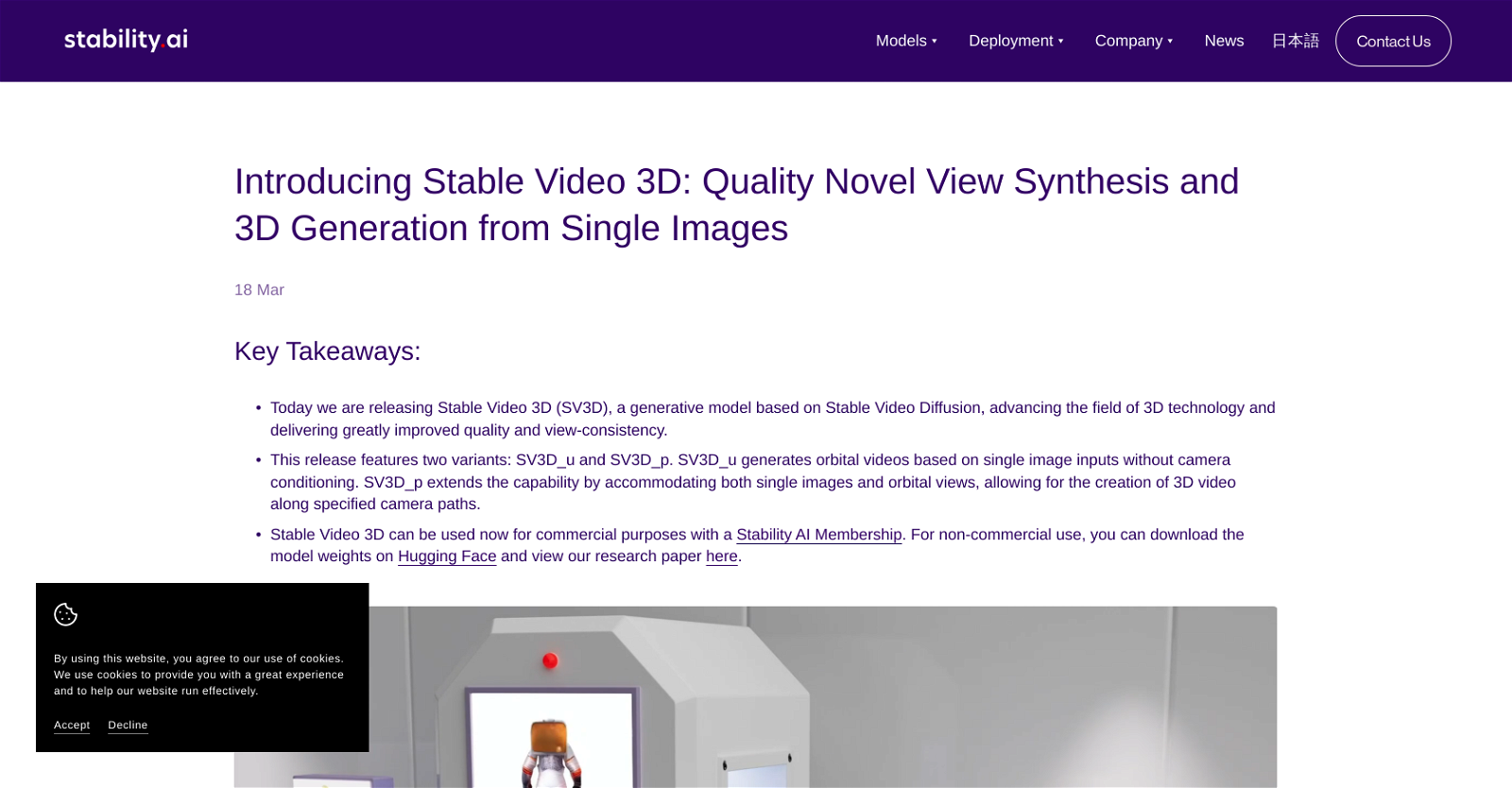Stable Video 3D
Stable Video 3D (SV3D) is a revolutionary generative model that fuels advancements in the field of 3D technology. A product of Stability AI, SV3D draws upon the versatility and foundation of Stable Video Diffusion to offer greatly improved quality and multi-view consistency.
The tool operates with a more advanced level of performance compared to its predecessor, Stable Zero123 and other open source alternatives such as Zero123-XL.
The SV3D model comes in two variants. The SV3D_u generates orbital videos from single image inputs without camera conditioning, while the SV3D_p boats a higher functionality by accommodating both single images and orbital views, hence enabling the creation of 3D video along specified camera paths.
Adapting the Stable Video Diffusion image-to-video diffusion model with the addition of camera path conditioning, the tool is designed to generate multi-view videos of an object.
This technique provides major benefits in terms of generalization and view-consistency of generated outputs. Therefore, SV3D can be used to output quality 3D meshes from single image inputs.
Both commercial and non-commercial usage is supported. The model weights are downloadable on Hugging Face and a research paper is available for detailed understanding.
Stable Video 3D also introduces significant advancements in novel view synthesis (NVS) and 3D generation, delivering coherent views from any given angle with proficient generalization.
Would you recommend Stable Video 3D?
Help other people by letting them know if this AI was useful.
Feature requests



Pros and Cons
Pros
Cons
Q&A
If you liked Stable Video 3D
People also searched
Help
To prevent spam, some actions require being signed in. It's free and takes a few seconds.
Sign in with Google



